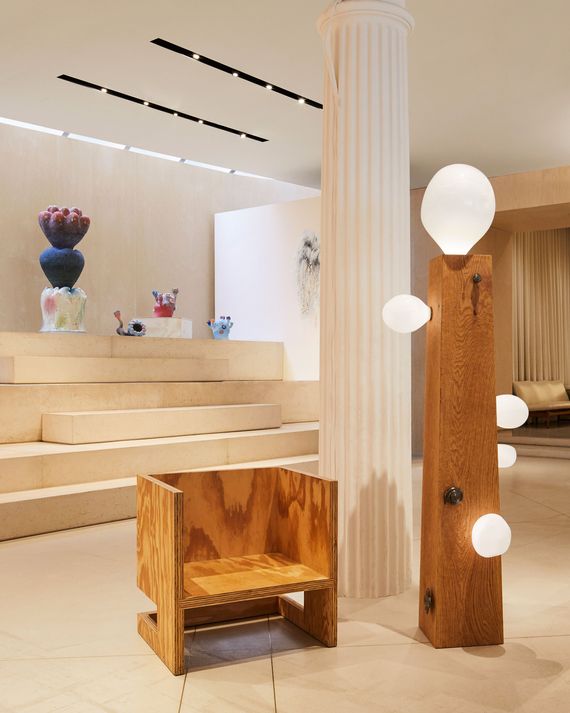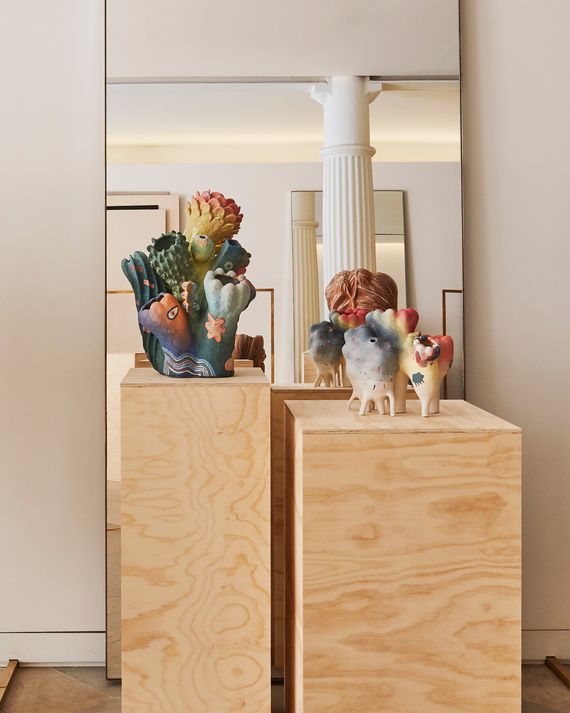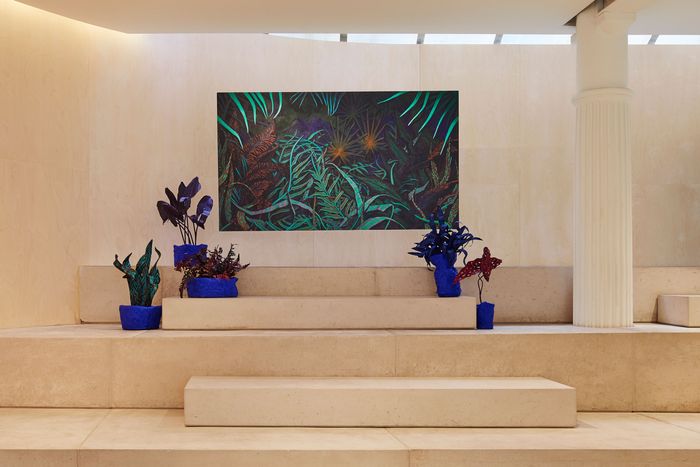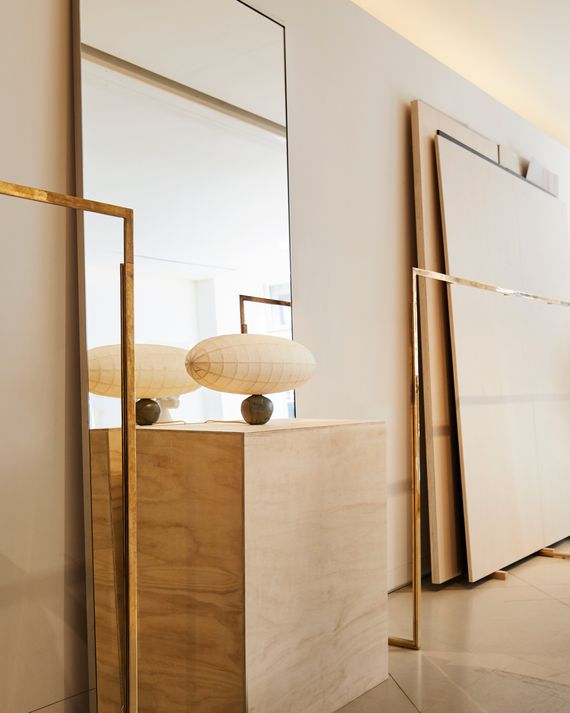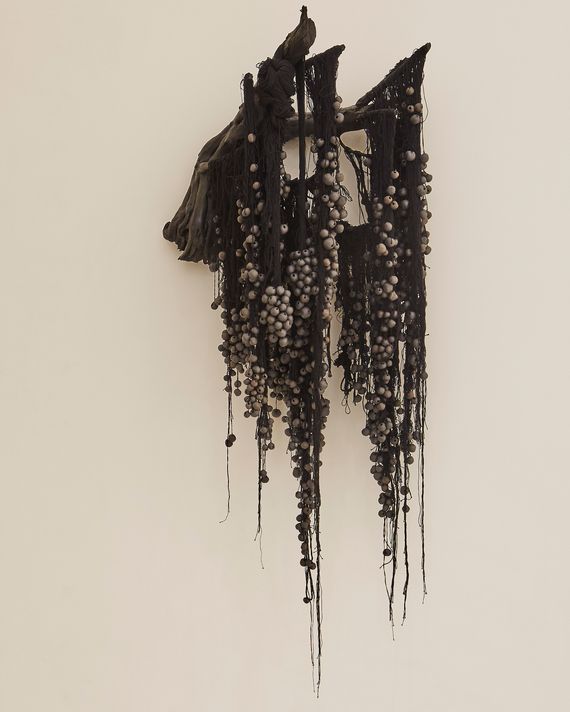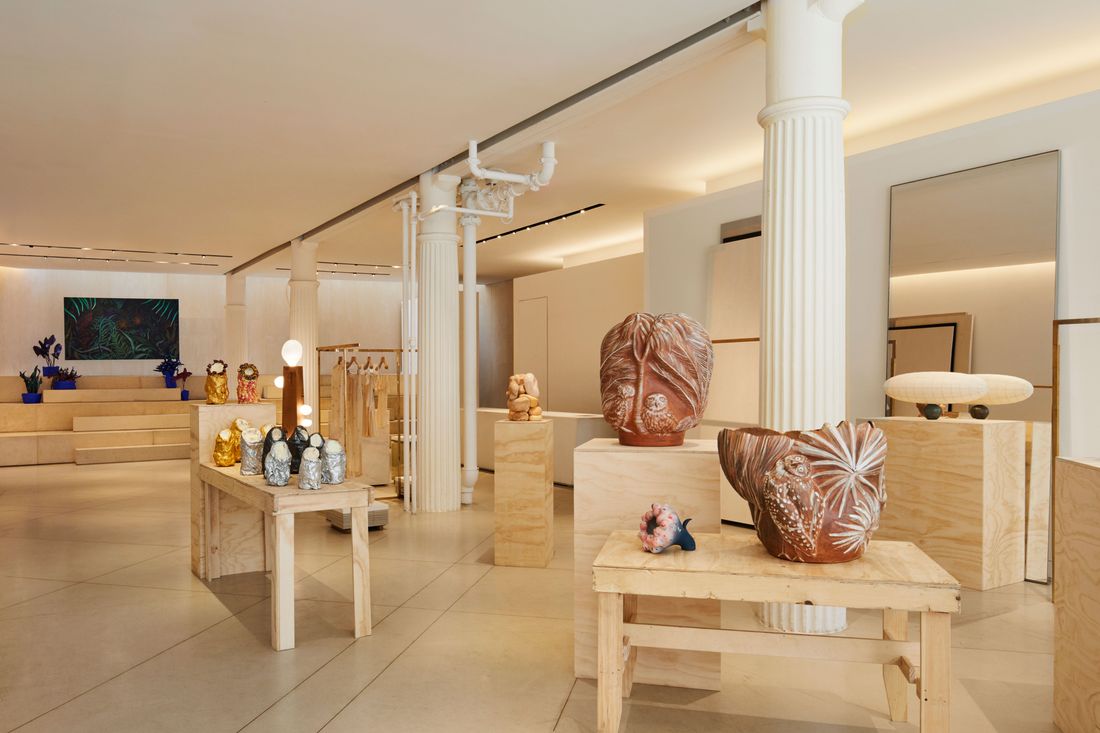
At the 3.1 Phillip Lim store on Great Jones Street, in between racks of deconstructed button-down shirts and soft leather bags, you might encounter a candy-colored neon light framed with silk flowers or a row of knobby ceramics that look like otherworldly tree stumps arranged on a plywood podium. The pieces don’t exactly blend in, but they also look at home in the space — as if a spare downtown gallery has crept into a few corners of the boutique. It’s not uncommon to see something like this in Milan during its Design Week, when fashion brands from Gucci to Bottega Veneta to Loro Piana launch new homeware collections or otherwise display design objects in their showrooms. But it’s not a regular part of New York’s Design Week, and Phillip Lim is not branching out into home goods. It’s “Crafting Selfhood,” a group show of ceramics, weavings, and light fixtures made by 13 women AAPI artists.
For the second year in a row, curators Lora Appleton and Karen Wong, with help from Wen Zhou, the CEO of 3.1 Phillip Lim, have brought together a group of artists to fill the brand’s New York outpost with art. Appleton, founder of kinder MODERN and the Female Design Council, and Wong, former deputy director of the New Museum and board member at the Smithsonian’s Asian Pacific American Center, wanted in particular to bring a group of Asian American and Pacific Islander artists together, and the theme links to a new accessory collection by Phillip Lim inspired by a treasured ID bracelet. Appleton, who has curated work in retail settings before, says she appreciates the challenge of fitting pieces within an already existing setting, but it’s made easier by the store’s spare aesthetic. Below are some of our favorite pieces from the exhibition, on view through May 23.
Eny Lee Parker’s Floor Lamp
This piece by Parker, a New York–based designer of lighting, furniture, and art objects who has shown at Art Basel and collaborated with brands Lulu and Georgia and Hudson Valley Lighting, has built in an element of discovery: The dimmers, rendered as snails and shells with a natural, swirling curvature, are linked to different globes, creating a puzzle to be solved each time the lamp is turned on. “You can imagine forgetting that every time for quite some time, if you owned the lamp,” says Appleton.
Janny Baek’s Ceramics
Baek, born in Seoul and raised in Queens, utilizes gradients of vibrant colors in her intricate, organic-looking ceramics, which evoke images of sea creatures and alien landscapes. The placement of Baek’s pieces, says Appleton, required some careful planning: “We wanted to display very colorful ceramics in front of the store’s large mirror so that you could get the 360 view of these incredible pieces, but we also opted for not having them on pedestals, because they’re also very delicate, and in putting this exhibition together we also had to be thinking about retail traffic!”
Phaan Howng’s Otherworldly Plants
Taiwanese American artist Howng’s work is inspired by landscape theory and Victorian-era anthropology, and these pieces with cobalt-blue bases and leaves sculpted from wire and foam mix the exuberant shapes of well-loved houseplants with a colorful, fantastical sense of otherworldliness. They sit on the top layer of the store’s set of wood steps.
Steffany Tran’s Lamps
Tran, a New York–based ceramicist and industrial designer (and member of the Female Design Council herself), creates objects that are both decorative and genuinely useful — think tabletop lamps in layered, neutral tones with texture. It’s not a stretch for her, since she brings her art to projects with MTA Metro-North and the NYC Design Studio, where she thinks about creative solutions to civic-design issues. Tran makes her oversize bulb-shaped lampshades using 100-year-old paper, a particularly finicky material: “They can only be made twice a year because of the humidity and pressing process,” explains Appleton.
Sonya Yong James’s Wall Hangings
James, a multidisciplinary artist born in Knoxville, Tennessee, and now based in Atlanta, crafted this wall hanging from thread and repurposed cloth using weaving techniques she notes are often associated with women’s labor and housework. The result is a piece of art that looks like ’70s macramé crossed with a wildly overgrown plant, the strands and globules in different shades of black. It’s lush but also slightly menacing.
Relates Stories
- Wendy Goodman’s Top-Ten Finds From WantedDesign
- Fiberglass Chairs, Rodeo-Inspired Lamps, and More From Jonalddudd’s 2024 Show
- A Handles-and-Knobs Start-up by Sight Unseen’s Monica Khemsurov


